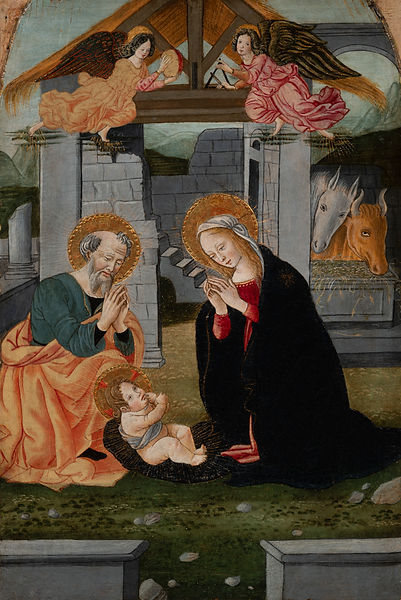FG FINE ART LTD

Pseudo Pierfrancesco Fiorentino
Florence, 1470 - 1490 c.
The composition of our painting, datable around the 90s of the XV century, is connected to a small nucleus of devotional paintings. This nucleus, already listed in the catalogue of the artist by both Federico Zeri and Everett Fahy, would seem to open a window on what may constitute the most extreme phase of his long activity.

Nativity
Tempera on panel, 40.6 x 26.7 cm
Provenance
New York, Mrs Albert E. Goodhart, bequeathed in 1952 to
New York, Robert Lehman (1891-1969)
New York, private collection, since 1960 c.

This panel, , who was in the collection of the well-known Robert Lehman, is undoubtedly to be associated with the corpus of works assembled by Bernard Berenson in 1932, which is composed by a broad number of panels created at the end of the fifteenth century and stylistically close to Fra Filippo Lippi and Francesco Pesellino. In 1928, Frederick Mason Perkin had been the first to suggest differentiating between Pseudo Pierfrancesco Fiorentino and Pierfrancesco Fiorentino, the latter being a student of Benozzo Gozzoli and Neri di Bicci. Subsequently Federico Zeri recognized in Berenson’s catalogue of this master not one, but several hands. Specialized in the production of panels representing the Madonna and destined to satisfy the strong demand from a largely secular clientele from various social classes for Marian images for domestic devotion, this group of artists used drawings and cartoons created by the two masters to execute their own version of the subject.
The first example of this production is the Nativity at the Museo Nazionale di Palazzo Venezia, in Rome or the version with some variations such as in the landscape or in the architecture of the hut in Musée du Petit Palais in Avignone, France and very similar to the one formerly in Collezione Barsati in Rome.
Indeed, “this indefatigable and prolific band of ‘Stakhanovists’ of the Florentine arts and crafts in the second half of the fifteenth century” – to cite Zeri’s phrase – who masquerade under the name of Pseudo Pierfrancesco Fiorentino, seems to have played an essentially popularizing role in diffusing successful works.
A full fact sheet is available on request.
